#cantonese chinese
Explore tagged Tumblr posts
Text
Writing “Chinese” in Chinese
Here is a little bit of information that I thought would be great to share!
So whenever I’m writing my tags or trying to introduce myself, I think about how I would actually write the name of my target language. So for example, to say “I am learning Spanish” I would write “ Estoy aprendiendo español”. The translation is simple. But for Chinese, that’s not the case.
There are differences in Chinese as it’s written versus when it’s spoken. There’s also differences between Mandarin Chinese and Cantonese Chinese. It was interesting trying to make sense of which ones to use and when, so I looked it up! I used several resources, which will be linked at the end.
Below, I have the noted words, with both Mandarin and Cantonese pinyin and jyutping to showcase how it’s pronounced. There are also detailed explanations as well. Anyway, here it goes!
Chinese (person): 中国人。 Zhōng guó rén / zung1 gwok3 jan4
The main reason why I placed this here is due to how English as a language works. When you look up how to say Chinese in Chinese, this will pop up. It’s only due to the fact that English uses words such Chinese, Spanish, etc to describe the language, people, and objects pertaining to that country. So we use “Chinese” for both “I am Chinese” and “I speak Chinese”. This not the case for other languages though. They have separate words for the language and the people. So in Chinese, to that say a Chinese person you use “中国人”.
This breaks down in multiple ways. 中 means middle and it’s commonly used to as an indication for China. 国 means country so when used with 中, it means middle country, or China. When having 人 , which means person, it becomes the meaning given above. All of this is important to know as 中 and the other characters will be used with this context in mind.
Chinese (written): 中文 zhōng wén / zung1 man4
This is mainly for Chinese as the written language. It can apply to all the languages under it (so mandarin, cantonese, etc). It can also be used for the spoken Chinese as well. This would be the simplest form to use when wanting to say “I’m learning Chinese.” This would not help with specifics though.
This is written like this due to 文 meaning writing, character, script, and language. With 中 meaning China, the two form together to create the meaning of “the written language of China”, “the Chinese written language,” or even a simple “Chinese writing”. It also can be seen as “Chinese Language” as well. This is why even though you can use this as a simple “Chinese”, it carries the idea of writing in Chinese.
In general, if you don’t mind the vagueness of 中文, then you can use it. But if you want to be specific in whether your learning Mandarin, Cantonese, etc, then use the ones below.
Mandarin Chinese (Han People): 汉语 hàn yǔ / hon3 jyu5
This is used to say the language of the Han people, which make up most of the Chinese population. This is understood to mean Mandarin and is commonly used for it. It is also used by teachers as well so while 中文 is used by everyday people to say Chinese, 汉语 might be used in schools to specify Mandarin.
This is broken down by 汉 meaning the Han people, an ethnic group that makes up most of the population in China, and 语 meaning language, tongue, or expression. This means that with the two combined, it brings the idea of “Han language” or “language of the Han people”. It is used more often to refer to the spoken language of Chinese, such as Mandarin.
Small note: I went back through to double check this post and it seems that for some speakers, this actually does refer to other dialects/languages. Some have noted that people can use this to also mean Cantonese as well, although several articles go against this.
Mandarin Chinese (Common Language): 普通话 pútōng huà / pou2 tung1 waa2
This is used to also say Mandarin Chinese, but through the idea of a “common language” or “common dialect”. It’s from the idea of speaking in the common dialect, which in China and learning settings, would be Mandarin. This is how the Chinese government puts their official language.
This can be broken down by 普 meaning universal, general, widespread, 通 meaning pass through, common, communicate, and 话 meaning speak, talk, communicate, dialect. This all comes together to form the idea of a common dialect.
I am curious if this meaning for Mandarin Chinese changes depending on environment. If one is in an environment where most speakers speak Cantonese, would 普通话 mean Cantonese instead? Would love to know!
Mandarin Chinese (Taiwan): 国语 guóyǔ / gwok3 jyu5
This version is used primarily in Taiwan. It means “language of the country” or “country language”. This doesn’t explain much about the exact language is it, but since Mandarin is spoken in Taiwan, using this word to describe Mandarin makes sense. It’s the idea of speaking the country or national language, aka Mandarin.
This word can be broken down by 国 and 语。Both of which have been explained above.
Mandarin Chinese (Overseas): 华语 huáyǔ / waa4 jyu5
Now in in the articles I looked at, they note that even in overseas communities there are different words for Mandarin. This version is used mainly in South East Asian countries, such as Singapore and Malaysia. This time though, the ideas behind the characters are a bit more complex in nature.
The characters can be broken down by 华 and 语. While 语 has been explained before, 华 carries a much more complicated history. Just as 中 can mean “Middle” while also being used to mean China, 华 does the same. 华 means splendid, magnificent, and flowery, but it’s not this meaning that 华语 is using. That is due to 华 being used in the word 华夏, which is a concept of the Chinese civilization and nation. It’s an awareness of the Han people and their ancestors.
夏 is the name of the very fist Chinese Dynasty, the one that formed the country. Having 华夏 together brings this idea of a great dynasty and the importance it holds for Chinese communities and their shared history. So for Chinese people in places such as Singapore and Malaysia, it’s way for them to connect to their ancestry. They can also connect with their language through this, hence 华语。
This all comes together to bring the idea of Chinese people in Singapore speaking the language of their people or ancestors, which in most cases is understood to be Mandarin. The language of their Han ancestors, 华语,is Mandarin.
Mandarin (Officialese): 官话 guān huà / gun1 waa2
This one is very straight forward, but is also used in many different contexts. 官 means official, bureaucratic, or government. When this is combined with 话, it takes on the meaning of official language, which in China is Mandarin. This isn’t it’s only meaning though. It can also be used to say bureaucratic language or even used to mock or joke about “official language” or “officialese”. So be mindful that this isn’t used to only mean Mandarin.
Mandarin (Northern Dialect): 北方方言 běi fāng fāng yán / baak1 fong1 fong1 jin4
This one is actually quite simple! The first part of this is 北方, which means north or northern. The second part, 方言, means topolect, which is sorta like a dialect. This very easily translates into northern topolect/dialect. This encompasses all the dialects of northern, north eastern, and south westward China into one thing of “Mandarin”. This is only really used in linguistic circles. It wasn’t in the main articles and only brought up in terms of linguistics so using this is not very important. It’s only for technicalities.
So far this is all that I have found for Mandarin but, there are also several ways to say Cantonese as well.
Cantonese (Hong Kong): 粤语 yuèyǔ / jyut6 jyu5
This word is mainly used in Hong Kong. This variation is also complex in it’s meaning as it brings older ideas of the southern provinces in China. 语 has already been explained previously but 粤 carries much more history. When looking up 粤, it doesn’t show much detail other than just “Cantonese” or “Guangdong or Gaungxi province”. But if you look at the radical used in the character, this brings more information.
In the character 粤, there is the radical 米. This radical has the meaning of husked rice or grains of rice. This brings about the ideas of 粤 relating to rice, and in turn the language of things associated with rice. This is amazing because rice was traditionally cultivated in southern china. Rice was made in the south due to the warm and wet climate. Now, the south is associated with Rice. There is even an on going stereotype that southern Chinese people love rice and rice related things.
So Cantonese, which tends to be spoken in southern China, is referred to as 粤语, a word that is related to rice. It all comes together in this cool way that otherwise would not have been known without going into the radical.
Cantonese (Mainland China): 广东话 guǎngdōnghuà / jim2 dung1 waa2 or 6
This version is used by those in mainland china. The word gains its meaning from the region of 广东, which is a province in southern China where most of the population speaks Cantonese. (Where my Chinese ancestors are from :D ) Because of this, Cantonese is referred to as 广东话, or “Guangdong Language” or “Guangdong Dialect”.
This is very simple to break down as 话 was explained previously. 广东 is simply the name of the region in southern China. The character 广 means wide, extensive, and broad. The character 东 means east, host, or owner. I’m not sure on the history of why the southern provinces are named this way, but it is interesting to know. I will probably make a post explaining this history when or if I find I out.
Cantonese 白话 báihuà / baak6 waa2
This version of saying “Cantonese” is very very informal. It’s a term that’s very colloquial. It’s reportedly not used in Hong Kong, but can still be used in Mainland China. It’s a term that has many other uses and meanings so it’s not wise to use it only to say “Cantonese”. It can mean gossip, chit-chat, or even baseless claims. This is all derived from it’s characters.
白 means white, but just like many other languages, white isn’t only to say the color. 白 is also used to mean blank, clear, or plain. With this, when combined with 话, it gives off the idea of speaking very plainly and/or having nothing of value to your talk in either gossip or no evidence to back up claims.
It’s versatile in it’s use due to this, but those who use it to mean Cantonese are probably using it to make Cantonese seem like the “common” or “plain” language used. It’s the same idea of 普通话, where it’s the common tongue or dialect. Or at least that’s how I’m interpreting it.
This is all I have in terms of how to say “Chinese” in Chinese. I realize only after making this post that I did not use traditional characters at all. This would only change the appearance of the characters, not the pronunciation or use of the characters. Anyway, besides this I hope this post proved to be helpful and allowed many of you to learn something new! My sources are now listed below!
Sources:
https://goeastmandarin.com/how-say-chinese-language-mandarin-chinese/
https://www.duchinese.net/blog/91-how-to-say-chinese-in-chinese/
https://www.tutormandarin.net/en/5-ways-how-to-say-chinese-in-chinese/
https://www.quora.com/How-do-you-write-Cantonese-in-Cantonese
https://www.quora.com/What-is-the-Mandarin-word-for-Mandarin
https://www.mdbg.net/chinese/dictionary
https://www.pleco.com/
#langblr#language leanring#peachycanton#chinese#chinese langblr#mandarin chinese#cantonese chinese#cantonese#Mandarin Vocabulary#Cantonese vocab#中文#汉语#普通话#国语#华语#官话#北方方言#粤语#广东话#白话#long post#cantonese vocabulary#mandarin vocab#mandarin langblr#chinese vocab#Chinese Vocabulary#so many tags omg#this took me days and i'm so tired#i just kept finding more things to add to my notes#please correct me if i'm wrong about anything
42 notes
·
View notes
Text

Denizens of Spring
[Sun Wukong & The Destined One]
#sigh…. in another life wukong can baby all of his younger monkeys forever#i think mandrill chief gave him little expeditions around the mountain when he was a baby monkey#and wukong does it for all the newborn cubs that he can#touring for all of the best peach and mango plants#ye ye wukong would be the most spoiling grandpa#ye ye sun !!! ye ye kong#he gets a bit :( if there’s no monkey born one year bc who will grasp onto his fur as he walks around#jttw#journey to the west#sun wukong#destined one#black myth wukong#monkeys#artists on tumblr#digital illustration#digital art#m1nsur0#i always forget the mandarin for grandpa lol i’m cantonese/hakka malay chinese
489 notes
·
View notes
Text
Wang Heye - Windy 2021
Wang Heye, from Harbin, Heilongjiang Province, is a male pop singer in Mainland China. In March 2021, he released his first music single "Windy" (大风吹 Dàfēng chuī) (aka "The Wind is Blowing Hard"), a retro disco tune sung in a mixture of Putonghua and Cantonese. Shortly after its release, it became a viral hit on the internet, inspiring a trend where users change into retro outfits upon the line "欢迎来到90年代" ("Welcome to the 90s").
"Windy" received a total of 78% yes votes!
youtube
#submitted#new to admin :D#finished#high yes#low reblog#20s#wang heye#chinese#putonghua#cantonese#o2#o2 sweep#lo1#lo3
859 notes
·
View notes
Text
BUCKLE UP ALL YOU BITCHES!
THE GODDESSS IS BACK!


#liziqi#desi tumblr#ancient china#chinese poetry#chinese fashion#chinese hanfu#chinese drama#sg chinese#chinese actress#chinese paintings#youtube#mandarin#chinese#chinese youtuber#李子柒#chinese culture#culture#china#Cantonese#south asian#asian#being desi#desi dark academia#desi girl#desi#cnliziqi#i lost my shit#im so fucking happy#she is back
115 notes
·
View notes
Text


lung cancer speedrun any%
drawn for bananabel_split's dtiys on twitter !!
timelapse under cut
#i love a good self destructive bisexual tboy#unrelated: hes chinese in my heart btw (specifically cantonese speaking) (not projecting at all)#i love william so much my heart hurts#jrwi#just roll with it#jrwi spoilers#jrwi fanart#ko art !#jrwi pd#jrwi show#william wisp#jrwi prime defenders#prime defenders#jrwi william wisp#jrwi william#jrwi wiwi#wiwi#wiwi wisp#just roll with it prime defenders#just roll with it fanart#just roll with it pd#jrwi art
113 notes
·
View notes
Text





BETTER DAYS | 少年的你 (dir. Derek Tsang)
What do you want? Study, take the exam, go to a good school. Become one of the smart ones and find answers. If possible, protect the world. Can you do it? I want to try. It's a deal. You protect the world. I'll protect you.
#better days#少年的你#jackson yee#zhou dongyu#worldcinemaedit#fyeahmovies#hong kong cinema#filmgifs#doyouevenfilm#filmtv#moviegifs#filmedit#movieedit#cinematv#cantonese cinema#chinese cinema#adaptationsdaily#THIS FILM BROKE ME IN EVERY WAY#BUT IM NOT COMPLAINING#WOW WHAT A FILM#SO MANY EMOTIONS#I CRIED SO MUCH#THE HOLD THEY HAVE ON MEEEEEEEEE
150 notes
·
View notes
Text










In my heart, I silently recite, and your voice will appear. You will find that I am saying to you, walk with me.
伍六七之记忆碎片 · SCISSOR SEVEN S5EP5
#伍六七之记忆碎片#scissor seven#fyanimegifs#anisource#dailyanime#dailyanimatedgifs#刺客伍六七#cike wu liuqi#scissor 7#伍六七#chinesemedia#animedit#donghua#chinese animation#anime#*4#s5ep5#wu liuqi#meihua shisan#plum blossom thirteen#theres something so mesmerising about the music in ss i dont even know how to explain it since the wutiaoren in season 1#its been bangers season after season 👌🔥🔥#its the cantonese and 'bad' singing mixed with botched mandarin...no donghua do it like them...this show is so shaped to all my likings
67 notes
·
View notes
Text
The Mid-Autumn Festival (中秋节), a Chinese celebratory season observed by many East and Southeast Asians, has begun. Held on the 15th day of the eighth lunar month, which is in the middle of autumn, the festival marks the end of the season’s harvest and is a time to appreciate the moon at its fullest and brightest. Besides feasting eyes on the moon and lanterns of different shapes and sizes, Mooncakes (月饼), a rich pastry with all sorts of fillings, are undoubtedly the main highlight of the festival and are traditionally shared among family and friends.
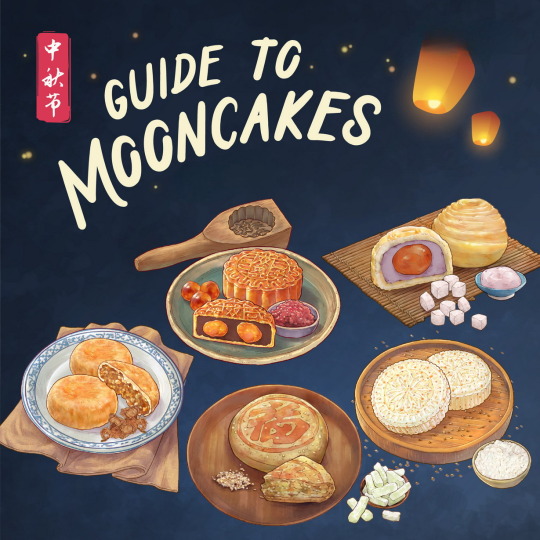
The Cantonese Mooncake (广式月饼) is the most commonly found traditional mooncake in Singapore. Its fillings consist of lotus seed or red bean paste and usually include one, two or four salted duck egg yolks. Many would also be familiar with the snow skin variant that was created in Hong Kong in the 1960s as a healthier alternative to traditional baked mooncakes. The fillings and a ball of dough are traditionally pressed into a wooden mould, which embosses intricate wordings of the pastry shop’s name or stuffing on top of the pastry.
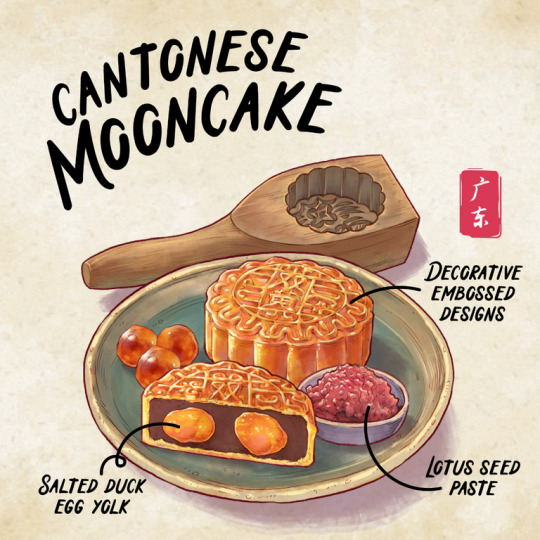
A mooncake with various flavours such as rich, savoury-sweet and peppery, the Hainanese Mooncake (海南月饼), also known as Su Yan Bing (酥盐饼) is traditionally filled with ingredients such as fried shallots, lard, salt, white pepper, rose-flavoured white sugar, sesame seeds, melon seeds and dried wild tangerine skin peel. The filling is encased in a thin crust made with flour, salt and lard.
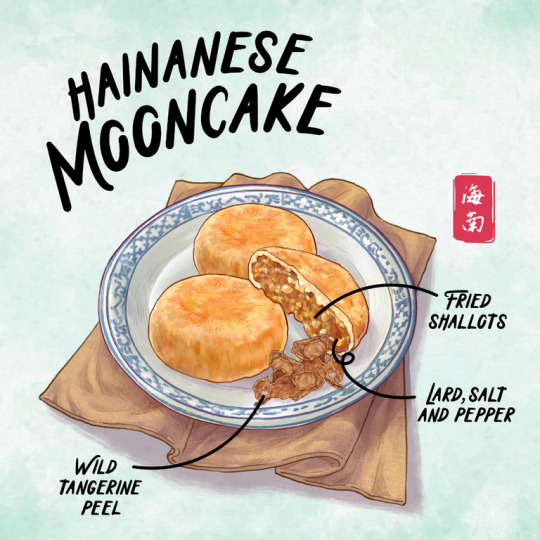
The Hakka Mooncake (客家月饼) is also called Yu Gao (月糕) and is a flat, snow-white disc that is typically made with cooked glutinous rice flour and sugar, giving it a crumbly and powdery texture. It is usually embellished with more intricate designs, often with animals and flowers. Although it doesn’t usually contain any fillings, some come with candied winter melon, desiccated coconut and sesame seeds mixed with glutinous rice flour, sugar, margarine and water.

Easily distinguishable by the red stamp of Chinese characters on the top of the crust and its white disc-shaped pastry which resembles a bright moon, the Hokkien Mooncake (福建月饼) consists of a dry and sweet filling that is made of candied winter melon, tangerine peel, melon seeds, sugar, and cooked with lard or peanut oil. A less common type is a savoury version with minced meat filling. Once known as Scholar Cakes (状元糕), they were given to those who took part in the Imperial examinations. Today, it is given as a symbol of good luck to those who are about to sit for their exams.
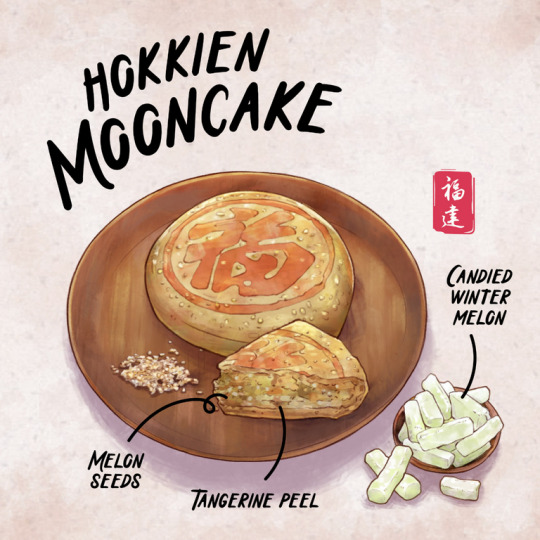
Many would be familiar with the Teochew Mooncakes (潮州月饼). It has a crispy, spiral-layered crust that crumbles easily. It originated from the Chaoshan (潮汕) area in Guangdong Province and typically consists of yam paste and a salted duck egg yolk. Other traditional versions of the Teochew mooncake are still made by old school bakeries in Singapore. For example, La Bia (朥饼 or lard biscuit), where ‘La’ refers to pork oil, has a thinner, flaky crust with a thick mung bean or red bean filling. There are also alternative fillings including red bean, mung bean or lotus seed paste. There is also a steamed version of the typically baked Teochew mooncake, called La Gao (朥糕). It can either be served plain or with a mung bean filling.
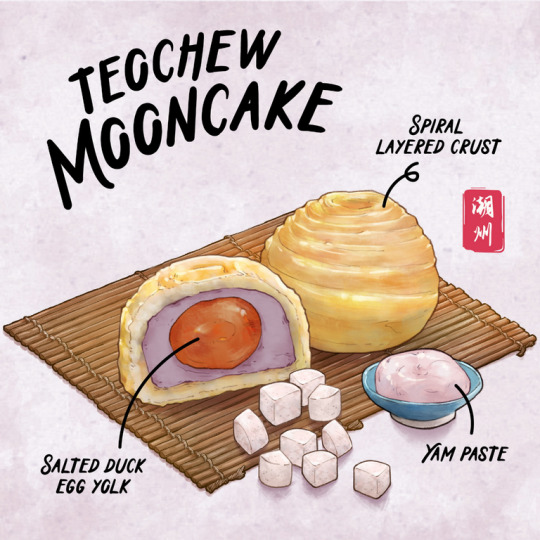
A Snow Skin Mooncake (冰皮月饼) variant was created in Hong Kong in the 1960s as a healthier alternative to traditional baked mooncakes. Similar to mochi, its crust is made of glutinous rice flour and varies in colour, based on the flavours used. And unlike traditional mooncakes, these are best served cold!
youtube
Mooncake information and drawings courtesy of Ministry of Culture, Community and Youth.
#Mid-Autumn Festival#中秋节#Mooncake Festival#农历八月十五#Chinese Culture#Chinese Tradition#Celebration#Mooncake#月饼#Cantonese Mooncake#广式月饼#Hainanese Mooncake#海南月饼#Hakka Mooncake#客家月饼#Hokkien Mooncake#福建月饼#Teochew Mooncake#潮州月饼#Snow Skin Mooncake#冰皮月饼#Recipe#Video#Youtube#Snack#Dessert#Asian Food#Food#Buffetlicious
126 notes
·
View notes
Text
Idk if this means anything but I’m thinking about how two dead characters who were really close to Arthur have names that are sheep-related (Peter Yang and Faroe)
Parker’s last name just means ‘sheep’ or ‘goat’ in Mandarin and Cantonese (I like to think he’s Cantonese or just Southern Chinese because most Chinese immigrants from the 30s would have been from the south iirc)
Faroe (as in the Faroe Islands) just means ‘the sheep islands’ in Nordic.
Idk if it’s intentional or has deeper meaning but that’s a lot of sheep (a whole island plus one)
#anyways enjoy my late night ramblings#I just think that sheep are pretty cool#also while I would be happy with a Cantonese Parker#I will not object to a Parker that speaks some Hokkien or any of the other southern Chinese languages#I think they deserve some love too#totally not biased#peter yang#malevolent podcast#faroe lester#halo just talking#malevolent
64 notes
·
View notes
Text
On Standards, Variants & Mix-ups
標準、異體以及混亂字
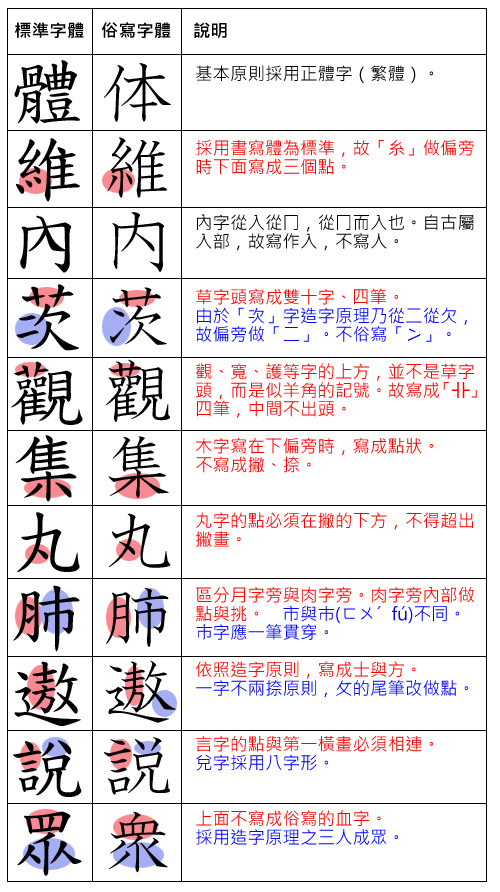
Stumbled upon this picture ↑ and this interesting, albeit, rather old webpage (article's from 2007) recently, where the author touches on the topic of “Standardised” and Variant Characters and some examples of the differences between Hong Kong and Taiwan style 繁體字 (Traditional characters).
“Standardised”, put in quotes because what's considered a Standard may be subject to changes any time.
What caught my eye was the characters for 「茨」、「丸」 and 「遨」 in particular, because while I knew about the other characters and their 異體 (variants) shown here, I never noticed/knew about the slight differences between the “Standard” (標準字體) and Popular (俗寫字體) variants for 「茨」、「丸」 and 「遨」 before, (no) thanks too to the added confusion brought on by font styles sometimes!
I realise in the grand scheme of things, especially as we go farther still into this digital age (and not forgetting about changing Standards every now and then), minor discrepancies in font styles are not going to really matter. But if one feels like being pedantic; wanna be “more correct” and all that…then this is something worth taking note of! (笑)
While I'm taking notes, I only realised now too that technically, characters like 「讀」、「續」、「犢」、「竇」 and 「櫝」 should be written with a
「*𧶠」 [🇭🇰🇲🇴 juk⁶; 🀄 ㄩˋ/yǜ]
*n.b.: in case it still can't be seen clearly, the 「罒」 is actually a compressed 「四」.
phonetic component rather than a
「賣」 [🇭🇰🇲🇴 maai⁶; 🀄 ㄇㄞˋ/mài]
This revelation certainly makes it clearer now why 「讀」、「續」、「犢」、「竇」 and 「櫝」 are pronounced with an ‘ㄨ/u; ㄩ/yü’ sound!
So have I been writing 「讀」 (and all other relevant characters) “wrongly” all this while?! (囧) Depending on what “Standards” one goes by I guess, confusing computer font styles notwithstanding! (笑)

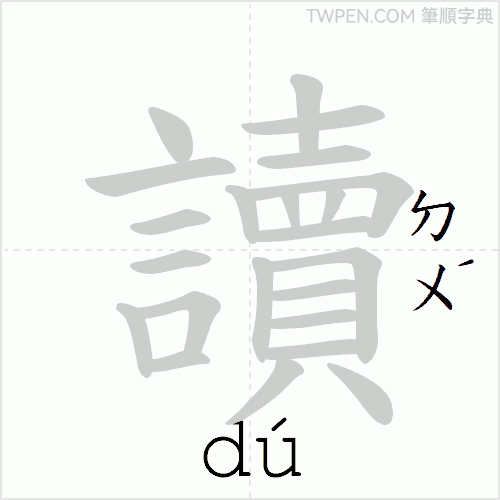
56 notes
·
View notes
Text

Spicy Sweet Shrimp and Water Chestnut
One of my go-to proteins, shrimp, is excellent for a quick weeknight supper and makes it simple to make midweek dinners in a pinch. The quick preparation methods for shrimp include boiling, roasting, grilling, and pan-frying. My ideal way to prepare them is as a quick evening supper, like this spicy sweet shrimp and water chestnut dish. A dash of chili heat has been added to liven up the sauce.
Get people back into the kitchen and combat the trend toward processed food and fast food. - Andrew Well
#food#asian cuisine#asian cooking#chinese cuisine#cantonese cuisine#sichuan food#szechuan#seafood dishes#shrimp dish#stir fry#homemade#home cooking#home cooked meal#my photography#food photography#original photography#thelcsdaily
212 notes
·
View notes
Text
HELP
ONE OF MY HOUSEMATES THOUGHT THAT EGG DROP SOUP HAD FLOUR IN IT
HE THOUGHT IT WAS EGG FLOUR SOUP 😭
35 notes
·
View notes
Text

Tracklist:
寒武紀 [The Cambrian Age] • 新房�� [New Tenant] • 香奈兒 [Chanel] • 阿修羅 [Asura] • 彼岸花 [Flowers of Paradise] • 如果你是假的 [If You Were False] • 不愛我的我不愛 [I Won't Love Anyone Who Doesn't Love Me] • 你喜歡不如我喜歡 [Your Likes Are Not as Important as Mine] • 再見螢火蟲 [Farewell Firefly] ["Firefly" Mandarin Version] • 笑忘書 [Book of Exhilaration] ["Love Letter to Myself" Mandarin Version] • 螢火蟲 [Firefly] [Cantonese Version] • 給自己的情書 [Love Letter to Myself]
Spotify ♪ YouTube
#hyltta-polls#polls#artist: 王菲 [faye wong]#language: mandarin chinese#language: cantonese#decade: 2000s#Mandopop#C-Pop#Dream Pop#Art Pop#Chamber Pop
21 notes
·
View notes
Text

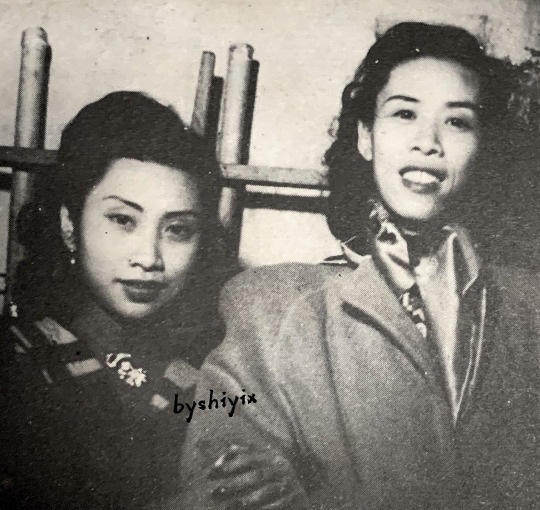
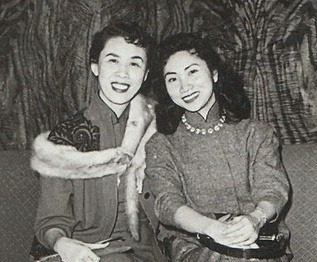
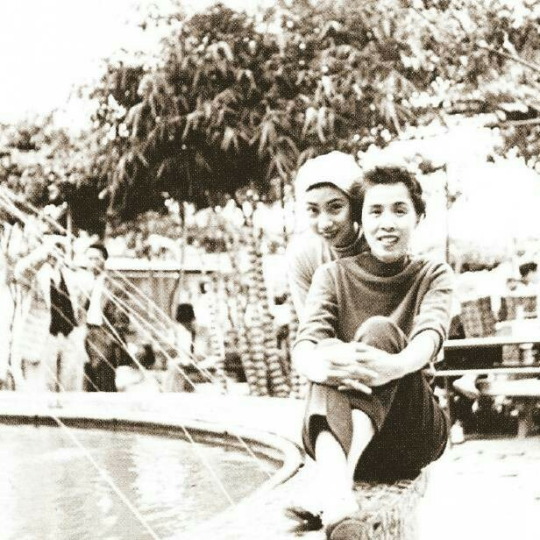

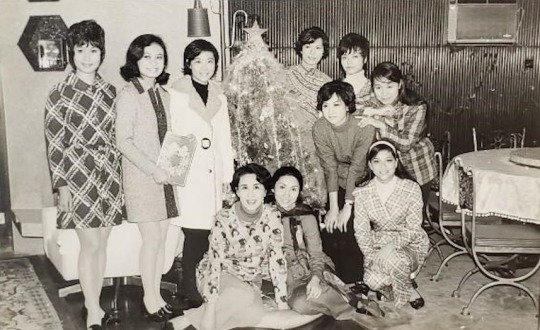

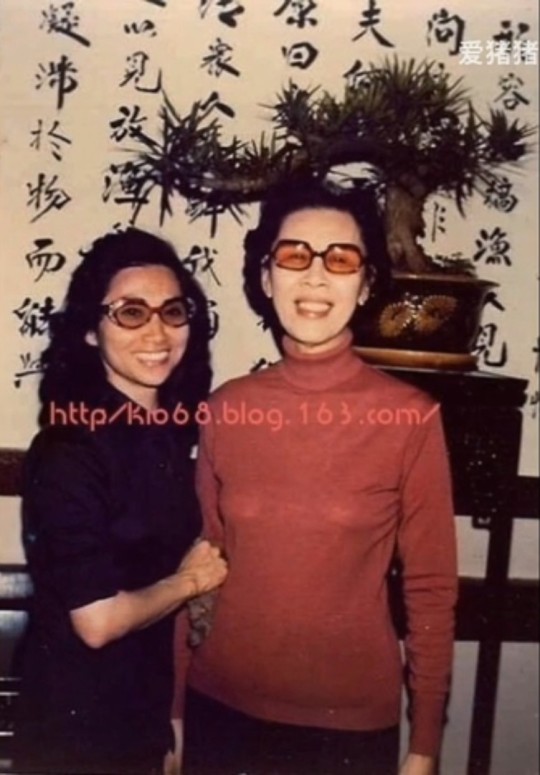
Female Queer Icons of Hong Kong // Yam Kim Fai (任劍輝) and Pak Suet Sin (白雪仙)
Photo 1: Promotional photo for 1955 contemporary movie The Model and the Car (玉女香車) (no video available) (Source: LCSD Museum Collection Search Portal)
Photo 4: Photo from Sin Fung Ming Opera Troupe's 1958 trip
Photo 5: Photo from a 1962 newspaper feature on Yam, Pak, and others at their (?) summer villa in Central, Hong Kong
Photo 6: Christmas celebrations with Yam, Pak, and their protégés of the Chor Fung Ming Troupe
Far and away the most iconic duo in Cantonese opera, Yam Kim Fai (任劍輝) and Pak Suet Sin (白雪仙) – commonly referred to simply as Yam-Pak (任白) – were famed for their partnership both on and off the stage… Click below to learn more!
Edit on 28/07/2023: Updated to link to a photo of the entrance to the Hong Kong Heritage Museum’s Pop Culture 60+ exhibit, and to add information regarding Yam and Pak's marriage status.
Iconic? How?
Yam-Pak are the face of Cantonese opera; you can't talk about the latter without mentioning the former. It's to the point where a gigantic picture of them graces the entrance to the Hong Kong Heritage Museum’s permanent exhibition on Hong Kong pop culture’s evolution across the past 60 years (“Hong Kong Pop 60+”) - they are the first thing you see upon entering!
Best known as the originators - with Yam playing the male leads and Pak the female leads - of five masterpieces of Cantonese opera, namely:
1. Princess Cheung Ping (帝女花) 2. The Legend of the Purple Hairpin (紫釵記) 3. The Dream Tryst in the Peony Pavilion (牡丹亭驚夢) 4. The Reincarnation of Lady Plum Blossom (再世紅梅記) 5. Butterfly and Red Pear Blossom (蝶影紅梨記) (Note: Princess Cheung Ping, Purple Hairpin, and Butterfly and Red Pear Blossom were made into abridged movie versions, with the Sin Fung Ming troupe members reprising their roles from the theatre productions. Also, the "Fragrant Sacrifice" (香夭) duet from Princess Cheung Ping (movie clip) is one of - if not the most - famous songs in Cantonese opera.)
Yam and Pak were the leading pair and co-founders of the legendary Sin Fung Ming Opera Troupe (仙鳳鳴劇團; 1956-1961), which is widely held to have pushed Cantonese opera forward as an artform due to Pak and scriptwriter Tong Tik Sang’s (唐滌生) emphasis on poetic libretti and adapting source material from Chinese literature and history. (Note: it has been common practice since the 1930's for Cantonese opera troupes to be founded by key actor(s).)
They were also very active in the Hong Kong film industry in the 1950's, being paired in over 40 movies together across roughly 8 years. One of those – the aforementioned Butterfly and Red Pear Blossom (蝶影紅梨記) – is the sole Cantonese opera movie on the Hong Kong Film Archive’s 100-Must See Hong Kong Movies list (IMDB list / archived version of the official PDF). It's a well-deserved inclusion - check out this beautifully-shot dance scene.
Even their post-retirement activities had a significant effect on the industry! In the early 1960’s, they held auditions for prospective students and provided - for free - systematic, hands-on training to those who passed; Yam and Pak even hired other veterans to teach skills they personally were not as familiar with. Prior to this, apprentices were expected to learn primarily from observing their masters, and to pay handsomely for the privilege. Yam-Pak’s methods proved exceedingly effective: the Chor Fung Ming Opera Troupe (雛鳳鳴劇團; 1963-1992) starring their apprentices reigned supreme in the 1970’s-1980’s. Following this success, Cantonese opera institutes - most notably the major 1900s-era guild, the Chinese Artists Association of Hong Kong (八和會館) - started to offer systematic coaching to young hopefuls in the 1980's.
Okay, so why are they queer icons specifically?
The lazy answer is that they're queer icons because nearly all of Yam's roles were male, so Gender is involved by default, and since most hit Cantonese operas of the time were romances, that means you get to see two female actors performing being in love onscreen (and also on stage, but there aren't any video recordings from back then). So far, so Takarazuka Revue.
Female actors playing male roles in Cantonese opera To give some context, each Cantonese opera performer specialises in one of four major role-types, and Yam was a sung (生) - i.e. an actor specialised in playing standard male roles. Female sung were fairly common in the 1910's-1930's due to women being banned from performing with men during that period, but when the ban lifted in the mid-1930's, many troupes shifted towards cis-casting. Yam was pretty much the only one whose popularity survived the transition. Just take a look at the huge number of Cantonese opera movies produced during the 1950’s-1960’s – you’ll be hard-pressed to find a female sung other than Yam, let alone one with top billing. Happily, thanks to Yam's immense popularity, her profilic film career (over 300 movies!), and the prominence of Sin Fung Ming works in the Cantonese opera canon, there has been a resurgence in female sung which endures to this day. Two noteworthy examples are Yam's protégé Sabrina Lee/ Loong Kim Sang (龍劍笙) - a star in her own right - and Joyce Koi/ Koi Ming Fai (蓋鳴暉), one of the biggest names still active in the industry. (Note: perhaps due to cinema being more "realistic" in nature, Yam's early movies often involved her playing female characters cross-dressing as men, including in some Cantonese opera movies. However, she received increasingly more male roles as her fame grew, and from the mid-1950's onwards she was playing male characters onscreen nearly exclusively-- even in non-Cantonese opera movies! See Photo 1 above.)
What sets Yam and Pak apart is that they were particularly known for their chemistry. Long before Sin Fung Ming's formation in 1956, the advertising copy for their first Cantonese opera movie together - Frolicking with a Pretty Maid in the Wineshop (酒樓戲鳳, 1952) - declared "Only this movie has Yam-Pak flirting on the silver screen" (source - 華僑日報 1952/05/23-26). And indeed, they were popular for their flirtatious duets: their Cantonese opera works invariably contained at least one, and such scenes made it into some of non-Cantonese opera (i.e. "contemporary") movies too. In fact, there are not one but two contemporary movies where Yam and Pak's characters are not paired up and yet still sing a duet together in such a way that their significant other(s) become convinced that the two are in romantically interested in each other - see 1952's Lovesick (為情顛倒) and 1956's The Happy Hall (滿堂吉慶) - a weirdly specific situation which doesn't crop up in the other, non-Yam-Pak movies I have seen.
Speaking of contemporary movies, let's talk about a certain plotline that keeps cropping up in works featuring the both of them and where Yam plays a woman! Six of the eleven movies which fit that criteria involve Yam's character cross-dressing as a man (a common characteristic across Yam's handful of female roles), and Pak's character falling for her. Nothing ever comes of it, of course, but, um. It was certainly a trend. Actually, even their very first movie together - 1951's Lucky Strike (福至心靈) - falls into this category.
Such storylines, and the emphasis on their chemistry, are particularly interesting given that both Yam and Pak remained ostensibly unmarried throughout. This was unusual for female performers of their stature, who tended to wed in their twenties, often to fellow-actors or wealthy men (e.g. Hung Sin Nui/紅線女, Fong Yim Fun/芳艷芬, and Tang Pik Wan/鄧碧雲)... In contrast, by the time Yam-Pak retired from the stage in 1961, they were both over 30 years old and without husbands.
Also, did I mention they were popularly believed to be living together? There doesn't seem to be any conclusive evidence either way... although it's a little strange that separate newspaper pictorials depicting "Yam at home" and "Pak at home" seem to be of the same location... however what is conclusive is that they did spent a lot of time together offstage. Pak has talked about how when they had no guests over, Yam would watch TV by herself while Pak was in the living room (source - p93), and protégé Mandy Fung/ Mui Suet Sze (梅雪詩) has said that Pak would sometimes cook for Yam at home (source - 03:53~). They would also celebrate birthdays, New Year's, and Christmas together (see Photo 6 for an example of the latter).
Shortly after Yam's passing in 1989, Pak set up the Yam Kim Fai and Pak Suet Sin Charitable Foundation (任白慈善基金) to support the arts and provide welfare for the elderly. In 1996, Pak made a large donation to Hong Kong University, resulting in one of the buildings being renamed Yam Pak Building (任白樓) in thanks (source).
Thanks for reading! Please feel free to DM me or send an ask if you have any questions, or are just interested in learning more.
If you made it here, have this bonus piece of trivia - Yam and Pak were also well-acquainted with Hong Kong's preeminent queer icon, Leslie Cheung (張國榮), who was a massive fan of theirs. Sadly there don't seem to be any pictures of them before Yam's passing, but here's one of Pak (centre) having afternoon tea with Cheung (left) and his long-term romantic partner Daffy Tong (唐鶴德) (right) at the Cova cafe in the Pacific Place shopping mall.
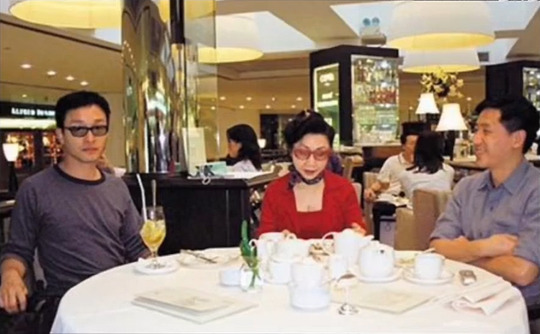
#wlw recommendations#sapphic#lgbtq#asian lgbtq#hong kong#theatre#cantonese opera#chinese opera#yam kim fai#leslie cheung#pak suet sin#yampak#yambak#pak sheut sin#bak sheut sin#hong kong queer icons#not me hastily adding tags because i keep forgetting certain ones
201 notes
·
View notes
Note
Tú, alcalde. ¿Hablas español? Eso sería genial :D
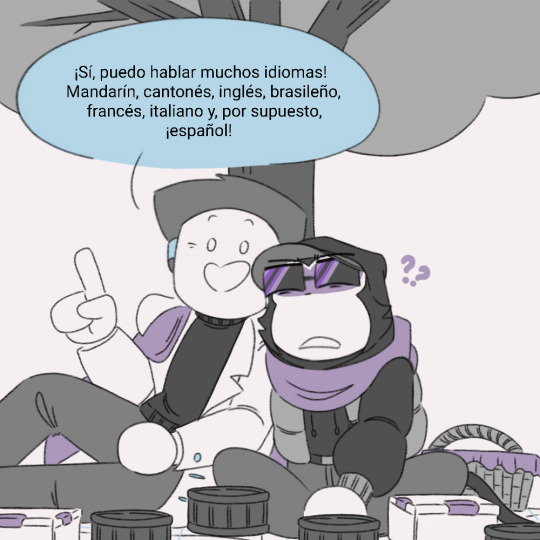
"Yes, I know many languages! Mandarin, cantonese, english, brazilian, french, italian, and of course, spanish!"
MASTER POST
Asks Start 💙💜
Previous 💙💜
Next 💙💜
#lego monkie kid#lego monkie kid fanart#monkie kid#monkie kid fanart#lmk#lmk fanart#lmk mayor#monkie kid mayor#lmk macaque#monkie kid macaque#blue and violet#I'm so sorry I had to use google translate for this 😭#I am unfortunately not fluent in spanish#but the Mayor probably is!#I mean they did spend like 500 years looking for the skeleton key and went around the world#they picked up many languages#many more than the Mayor lists here#they probably know a few asian languages too like indian and japanese and maybe vietnamese too#Idk about russian but they might know a bit#over time they have probably learned and forgotten languages#they might have been fluent in latin once but forgot when people stopped using it#the reason Mayor knows Cantonese is because my family is from that general providence of china that speaks it#so yeah its a little self indulgent#actually if any of you realised all of the Chinese food I mention in the blue and violet series and especially in colours-#-is probably from the Guangdong province in China or Hong Kong#dim sum as mentioned in the latest chapter is a thing that came from Guangdong haha#and the egg tarts too in the egg tart chapter#funny huh?#anyways sorry for the rambling I got a little carried away#Macaque is very confused
79 notes
·
View notes
Text
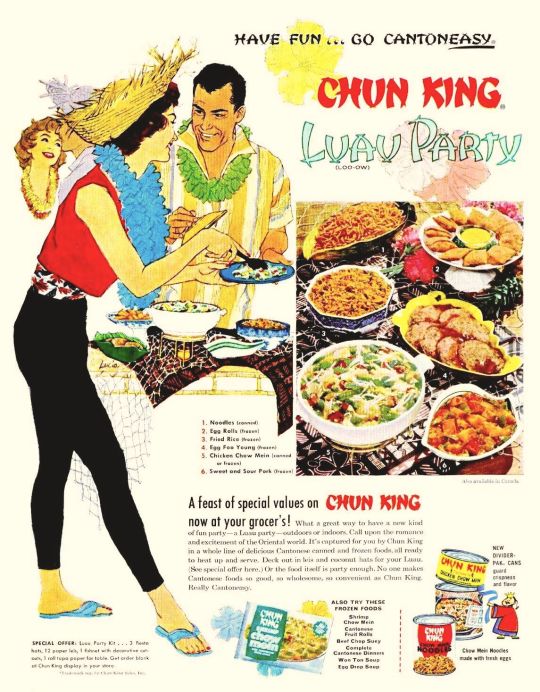
Chun King Sales Inc, 1959
#luau party#ad#1959#Chinese food#advertisement#vintage#1950s#illustration#Oriental#Cantonese#chow mein#egg foo young#frozen foods#advertising
165 notes
·
View notes